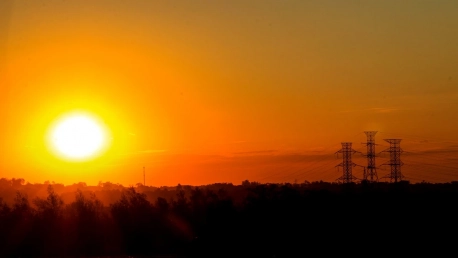As we lean into renewable energies to combat environmental issues, maintaining a stable power grid has become a key issue. Renewable sources such as solar and wind are inherently unpredictable, often leading to a supply-demand imbalance that threatens grid stability. To combat this, Demand Response (DR) systems have been developed. These systems are designed to adjust energy consumption based on the grid’s needs, essentially allowing consumers to contribute to the stability of the power supply by reducing or shifting their energy use when they receive signals indicating the grid is under stress. DR not only helps in balancing the grid but also in reducing energy costs for consumers who can change their consumption patterns. It’s an innovative step towards a harmonious integration of renewable energy sources into our daily lives, ensuring both environmental sustainability and grid reliability.
The Renewable Challenge
The Variability of Renewable Energy
Solar and wind power boast positive environmental impacts, but their reliance on changeable weather conditions means the power supply can be inconsistent. When the weather generates more energy than needed, there’s a surplus; but when it’s not favorable, shortages can occur. This unpredictability makes it hard to keep the power grid stable. Managing electricity demand becomes more critical as we lean more on renewables. Adjusting energy usage to match supply is a key strategy in a renewable energy system. It ensures that when there’s an abundance of energy from the sun or wind, it’s not wasted, while also preparing for times when these resources are scarce. Equipping the grid to handle these swings is vital for a reliable energy future. Sufficient storage solutions and smart grid technologies can help balance these fluctuations, but careful planning and policy are equally essential in transitioning to a clean, renewable-dominant energy landscape.
Power Grid Strain During Peak Demand
During times when energy use peaks, renewable resources often fall short, especially in the evenings when solar output wanes. Such high-demand moments place significant stress on electricity networks, as the drop in green energy production frequently compels suppliers to activate backup fossil fuel power stations that are less eco-friendly. Addressing this challenge is the role of demand response programs. These strategies are crucial for maintaining balance within the electrical system when it’s most needed. By encouraging adjustments in energy usage to match the available supply, demand response helps decrease dependence on environmentally harmful peaking plants. Not only does this stabilize the grid during high-stress periods, but it also supports a more sustainable approach to energy management. Promoting and enhancing these initiatives is essential to ensure that our expanding needs don’t compromise environmental commitments.
Demand Response Solutions
Sumitomo Electric’s Energy Management Systems
Sumitomo Electric has pioneered an advanced energy management system that addresses the challenges of balancing energy supply and demand in real-time. These systems were first unveiled in demonstration projects back in 2015, signaling a significant step forward in managing the fluctuations of power supply from renewable sources. The technology enables seamless integration and synchronized control of diverse elements, including solar power generation, energy storage solutions, and standalone generators.Crucially, the core objective of Sumitomo Electric’s system is to ensure consistent grid reliability. It achieves this by intelligently adjusting energy usage in response to the variable nature of renewables. As the world increasingly relies on sustainable energy sources, which can be intermittent, the ability to dynamically manage consumption becomes paramount. Sumitomo Electric’s innovation in this sphere helps stabilize the grid, demonstrating the company’s commitment to advancing smart energy solutions that support a sustainable future.
Demand Response Across Consumer Segments
Sumitomo Electric’s demand response initiatives aren’t confined to one group but span across the residential, commercial, and industrial sectors. By participating in customized demand response programs, all users can play a part in balancing the energy grid. Participants adjust their power consumption based on grid requirements, aiding in the reduction of the instability caused by the fluctuating nature of renewable energy sources. These adjustments can involve shifting energy-intensive activities to off-peak times or reducing non-critical power usage during high-demand periods. Such collective efforts enhance the power system’s reliability by smoothing out demand spikes. Through these measures, Sumitomo Electric fosters a more resilient and efficient energy infrastructure that is capable of integrating a higher percentage of renewable energies while maintaining a steady energy supply.









